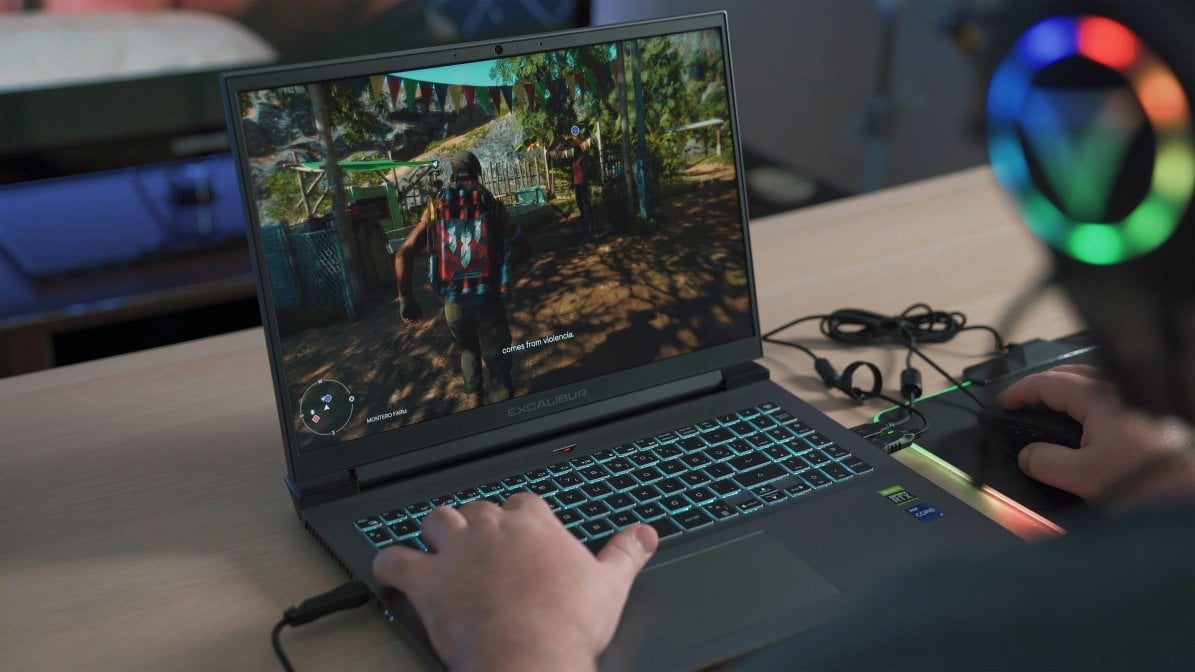
How to pick the right laptop for university or college
We break down why choosing the right laptop is so important, what are the key things to look out for, and even some of our top recommendations.
Find out how a PC with built-in AI capabilities works, and how it could help with your studies.

Artificial Intelligence, or AI, refers to computer systems that can take on tasks once thought to require human intelligence—like recognising speech, analysing data, or even creating images.
These systems and tools are quickly becoming a part of everyday student life, from helping draft emails to transcribing meetings, editing photos and even assisting in data analytics. The most popular online tool used is ChatGPT, but there are an increasing number of AI tools now available for all sorts of needs. Many of these can run locally on your PC or laptop, without relying on the cloud.
Computers and laptops have been evolving in order to support these programs. You might have even heard the term ‘AI PC’ or ‘Copilot+ PC’. This just means that they have been built with these AI programs in mind. However, there are some important differences to understand, especially when choosing a laptop that can support your studies for years to come.
An AI PC is a laptop or desktop that’s designed to run certain AI tasks locally, meaning on the device itself, rather than relying entirely on the internet and powerful servers in the cloud. This requires the PC to have a specialist piece of hardware, usually either an NPU or GPU. This means that you don’t need to rely on an internet connection, or potentially sharing sensitive information with a third party, in order to use these tools.
The most powerful of these PCs, at least for everyday users, are called RTX AI PCs. These are laptops or desktop computers with a GeForce RTX GPU (‘Graphics Card’) inside, which is the type of component that’s used to power the most powerful AI programs. GPUs are exceptionally well-suited for AI because of their ability to perform massive, parallel calculations, which is essential for training and running intensive AI models.
Big companies like those behind OpenAI use thousands of them to power tools like ChatGPT, but consumer-grade versions are available in hundreds of different PCs.
These tools can support practical, everyday tasks such as:
However, the majority of powerful AI tools still run in the cloud, such those within Microsoft Office. So you will still need a stable, fast internet connection and potentially a separate subscription based on the particular service or tool that you are using. This also means your data will be sent off the device, which you may not want.

We break down why choosing the right laptop is so important, what are the key things to look out for, and even some of our top recommendations.
For basic tasks like writing essays, doing research, or streaming videos, a standard laptop still works fine. But as AI becomes embedded in everything from art and design software to STEM tools and coding platforms, having a device that can run these tasks smoothly and privately becomes a real advantage. This is where a laptop with a GPU for example, an RTX AI PC, can be useful.
Whether you're studying design, engineering, languages, or psychology, access to fast, reliable AI tools on your laptop might prove very useful.
Modern Adobe tools lean heavily on AI, but what makes features like Neural Filters in Photoshop or scene detection in Premiere Pro usable is the GPU doing the heavy lifting. With a GeForce RTX GPU, these AI tasks run locally and interactively—backgrounds can be swapped in seconds, video masks track faces without cloud lag, and smart audio enhancements like auto ducking or noise removal happen in real time. Without that acceleration, these tools either become sluggish or push you into relying on cloud-based services with delays and privacy concerns.
Another set of popular creative tools, Topaz Labs, is a prime example of software that transforms with a powerful GPU. This suite offers AI-based video upscaling and denoising—all of which are extremely resource-intensive. On a laptop with an RTX 4060 or better, you can upscale old HD footage to 4K in a fraction of the time it would take on the CPU. It's not just about speed; it’s about making these tools usable on the go, without needing a monthly cloud subscription.
If you’re into 3D modelling or animation, NVIDIA’s new tools now let you link Blender to powerful generative AI tools using a system called ComfyUI. It means you can sketch a basic scene and have AI generate full visuals, directly informed by your design while massively speeding up ideation.
Simulations in physics, materials science, and engineering often require complex calculations—whether it's fluid dynamics, stress modeling, or particle interactions. GPU acceleration dramatically cuts down on processing times, turning overnight simulations into something you can run during a lecture break. With GeForce RTX, applications like ANSYS, COMSOL, or even custom CUDA-based code benefit from massively parallel processing, making iterative development and testing much faster.
If you’re doing any serious data science or machine learning, training models or crunching datasets on a CPU is frustratingly slow. With aGeForce RTX GPU, libraries like PyTorch or TensorFlow unlock hardware acceleration that makes model training, image classification, or statistical analysis much faster. For personal projects, or if you want to take coursework off campus, this can be very useful.
Choosing the right laptop is a long-term investment, especially when your needs might depend on performance, flexibility, and security. AI PCs may be relatively new, but they’re designed with the future of learning and working in mind.
If you’re choosing a laptop for the next three to five years, it’s worth considering one with local AI capabilities—particularly one with a dedicated GPU. We’ve also put together this laptop guide to help you figure out exactly what laptop might be best for you.